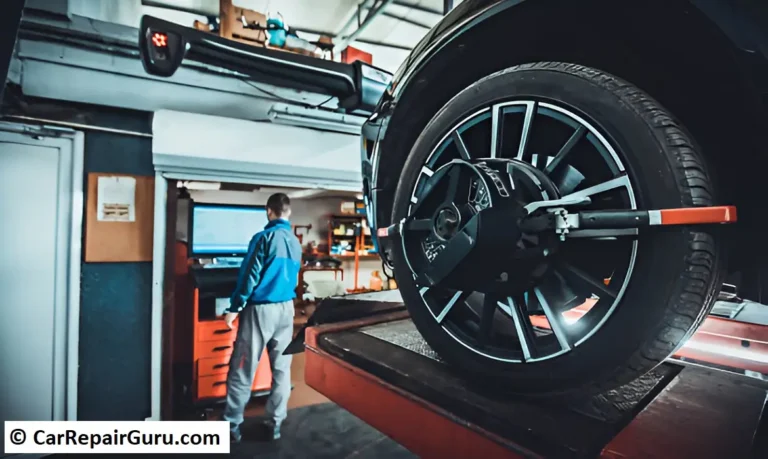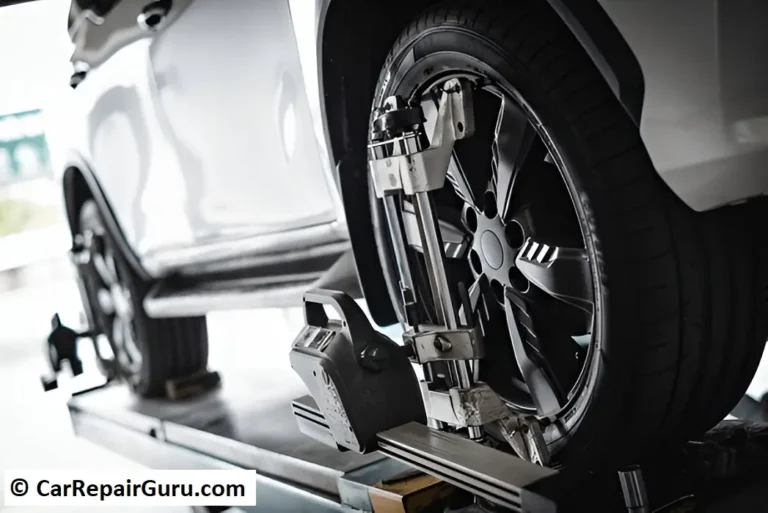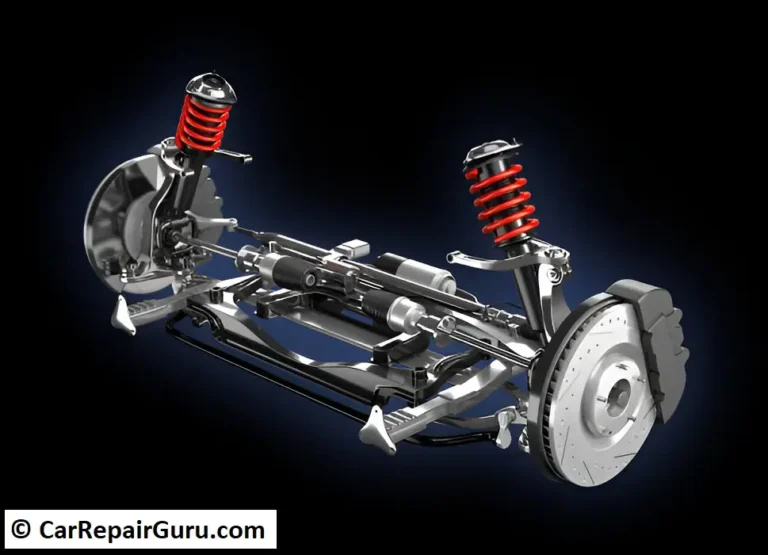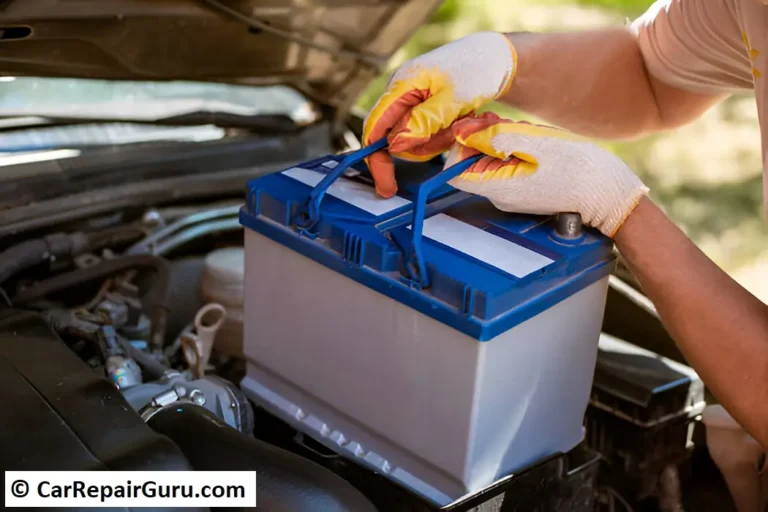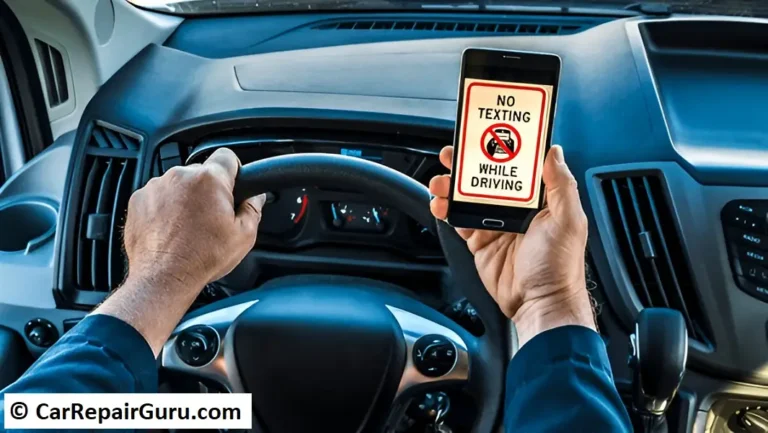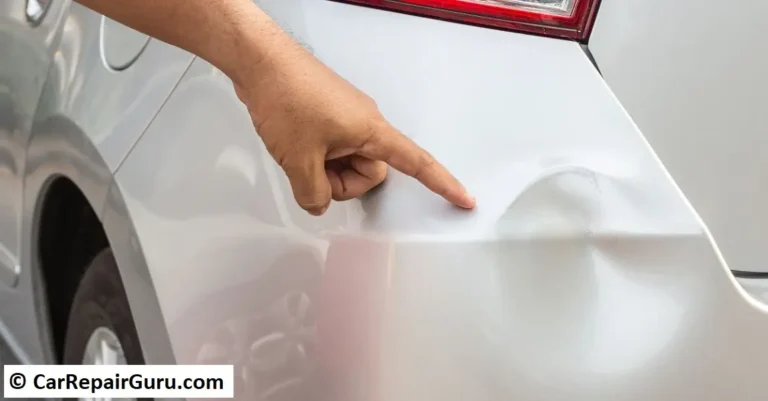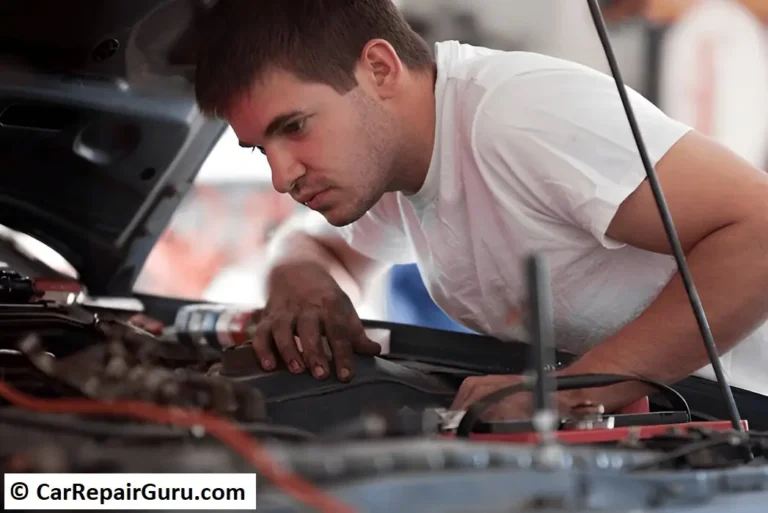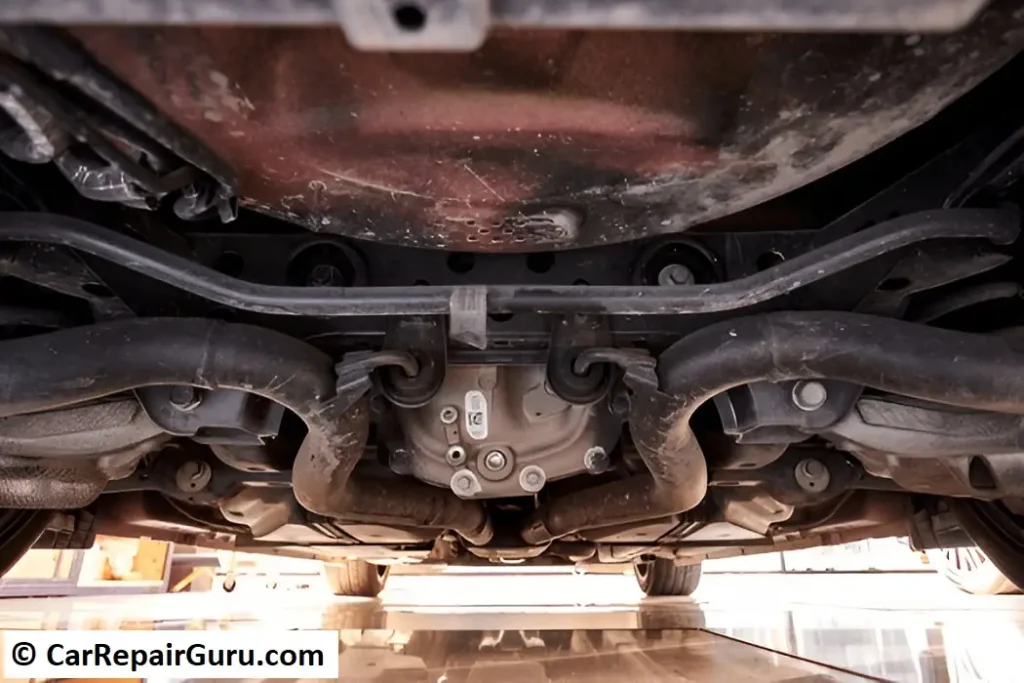
Have you ever taken a sharp turn and felt your car lean uncomfortably to one side? That sensation is called body roll, and it can make your vehicle feel unstable, especially at higher speeds or during sudden maneuvers. This is where anti-sway bars (also known as sway bars or stabilizer bars) come into play.
Anti-sway bars are a crucial part of a vehicle’s suspension system, designed to keep the car balanced by reducing excessive body roll. Whether you’re navigating winding roads or making quick lane changes, these bars help improve vehicle stability, making your ride smoother and more controlled.
By distributing force evenly between the left and right wheels, anti-sway bars enhance cornering performance and give drivers better handling. They’re especially beneficial for performance vehicles, SUVs, and trucks, where reducing chassis sway improves both comfort and safety. In this guide, we’ll explore everything you need to know about anti-sway bars, from how they work to installation tips and maintenance.
What is an Anti-Sway Bar?
An anti-sway bar, also known as an anti-roll bar or stabilizer bar, is a key component of a vehicle’s suspension system that helps maintain balance and control. It connects the left and right wheels through a rigid metal bar, typically made of steel, and works by redistributing force during turns and uneven road conditions.
When a car takes a turn, the weight shifts to one side, causing body roll—a tilting motion that can make the vehicle feel unstable. The anti-sway bar counteracts this by applying resistance, keeping both sides of the car more level. It does this by twisting slightly, transferring force from the compressed side of the suspension to the less-loaded side, effectively reducing excessive lean.
By minimizing body roll, anti-roll bars improve vehicle stability, allowing for better cornering performance and handling. They also enhance safety by helping prevent rollovers, especially in taller vehicles like SUVs and trucks. Whether you’re driving on curvy roads or making quick maneuvers, anti-sway bars ensure a smoother, more controlled ride.
In performance and sports cars, adjustable sway bars allow drivers to fine-tune their suspension for different driving conditions, maximizing both comfort and responsiveness.
How Do Anti-Sway Bars Work?
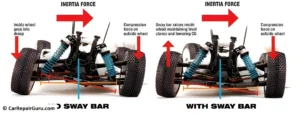
When a vehicle takes a sharp turn, the weight shifts to one side, causing body roll. Without the right suspension components, this can make the car feel unstable, affecting cornering performance and overall safety. This is where anti-sway bars (or anti-roll bars) come into play.
An anti-sway bar is essentially a torsion bar that connects the left and right wheels of a vehicle’s suspension. It works by twisting to resist the independent movement of each wheel, creating roll stiffness—a force that keeps the car more level during turns. When one wheel moves up due to road irregularities or cornering forces, the bar transfers some of that force to the opposite wheel, reducing excessive lean and improving vehicle stability.
This function is particularly useful in high-speed cornering, where too much body roll can lead to understeer (when the front tires lose grip) or oversteer (when the rear tires lose grip). By keeping the car balanced, anti-sway bars help maintain handling control, making the vehicle more predictable and responsive.
Beyond handling improvements, anti-sway bars also play a role in chassis reinforcement. By linking both sides of the suspension, they help distribute force evenly, reducing stress on other components. This is especially important for performance vehicles, off-road trucks, and SUVs, where a well-balanced suspension setup is crucial for safety and comfort.
For those looking to fine-tune their vehicle’s ride, adjustable sway bars offer the ability to customize roll stiffness. Looser settings allow for more body movement, enhancing ride comfort, while stiffer settings provide tighter control for aggressive driving or track performance.
In short, anti-sway bars are a simple yet effective upgrade that enhances handling, stability, and overall driving dynamics, making your ride both safer and more enjoyable.
Benefits of Installing Anti-Sway Bars
Adding anti-sway bars to your vehicle’s suspension system offers several advantages, particularly in terms of vehicle stability, handling improvement, and safety. Whether you drive a compact car, SUV, or performance vehicle, anti-sway bars help create a smoother, more controlled ride.
1. Improved Vehicle Stability
One of the biggest advantages of anti-sway bars is their ability to enhance vehicle stability by reducing body roll. When taking sharp turns or driving on uneven roads, the sway bar helps keep the car level by evenly distributing force between the wheels. This improves overall balance and control, making the driving experience more predictable and secure.
2. Enhanced Safety During Sudden Maneuvers
Whether you’re avoiding an obstacle, making a quick lane change, or navigating winding roads, anti-roll bars reduce the risk of excessive swaying. By maintaining a firm connection between the left and right wheels, they improve cornering performance, reducing the chances of understeer or oversteer, which can lead to loss of control.
3. Increased Comfort While Cornering
Without an anti-sway bar, excessive body roll can make cornering feel unstable and uncomfortable, especially in taller vehicles like SUVs and trucks. By reducing unnecessary movement, sway bars provide a smoother ride, enhancing both driver confidence and passenger comfort.
4. Optimized Suspension Efficiency
Anti-sway bars work alongside other suspension components to distribute weight more effectively, reducing stress on shocks and struts. This improves handling performance and prolongs the lifespan of other parts, making it a valuable investment for any driver.
Whether for everyday driving or high-performance handling, anti-sway bars are an essential upgrade for those looking to maximize safety, control, and overall driving dynamics.
Types of Anti-Sway Bars
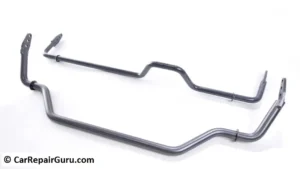
Not all anti-sway bars are the same—different designs cater to various driving needs, from daily commuting to high-performance racing. The type of sway bar installed affects roll stiffness, handling characteristics, and overall vehicle stability. Below are the main types of sway bars and their unique advantages.
1. Solid vs. Hollow (Tubular) Sway Bars
- Solid Sway Bars: Made from a single piece of steel, solid anti-sway bars offer maximum roll stiffness and durability. They are commonly used in high-performance and off-road vehicles where reducing body roll is crucial. However, they are heavier, which can add weight to the suspension.
- Hollow (Tubular) Sway Bars: These bars provide similar roll stiffness but with significantly less weight. They are ideal for improving handling performance while maintaining fuel efficiency. Many modern sports cars and aftermarket suspension kits use tubular sway bars for a balance of strength and reduced weight.
2. Adjustable vs. Non-Adjustable Sway Bars
- Adjustable Sway Bars: These bars allow drivers to fine-tune understeer and oversteer correction by modifying the stiffness settings. By changing the mounting points on the sway bar links, drivers can customize cornering performance based on their driving style or road conditions. This is a popular choice for track cars and off-road vehicles.
- Non-Adjustable Sway Bars: Standard factory sway bars are designed for general stability but lack tuning options. They provide a fixed level of roll stiffness, which works well for daily driving but may not suit performance enthusiasts looking for a more responsive suspension setup.
3. Active Anti-Roll Bars
Modern vehicles, especially high-end luxury and performance models, use active anti-roll bars that automatically adjust stiffness based on real-time driving conditions. These systems enhance vehicle stability by dynamically reducing body roll without sacrificing ride comfort. They are commonly found in sports sedans, SUVs, and off-road vehicles for improved handling on varying terrains.
Choosing the right anti-sway bar depends on driving needs, whether it’s reducing body roll, improving cornering performance, or fine-tuning suspension efficiency for different road conditions.
Signs Your Vehicle May Need Anti-Sway Bar Maintenance
Over time, anti-sway bars and their components can wear out, affecting your vehicle’s stability and handling performance. Recognizing the early signs of sway bar maintenance issues can help prevent more significant suspension problems and keep your ride safe and smooth.
1. Excessive Body Roll
If your car leans more than usual when taking turns or feels unstable at higher speeds, it could indicate a worn sway bar or damaged sway bar bushings. A failing anti-sway bar reduces roll stiffness, making cornering less controlled and potentially dangerous.
2. Strange Noises (Clunking or Rattling)
A common symptom of sway bar issues is a clunking or rattling noise coming from the suspension, especially when driving over bumps or uneven surfaces. This often results from loose or broken sway bar links that are no longer securing the bar properly.
3. Compromised Handling and Steering Response
A failing anti-sway bar can make your car feel unresponsive, especially during quick maneuvers or sudden lane changes. If you notice increased swaying or reduced cornering performance, it’s time to check the sway bar bushings and links.
Regular sway bar maintenance ensures optimal vehicle stability and extends the lifespan of your suspension system. Inspecting and replacing worn components helps maintain handling performance, keeping your ride safe and predictable.
How to Choose the Right Anti-Sway Bar for Your Vehicle
Selecting the right anti-sway bar depends on several factors, including vehicle type, driving habits, and performance goals. Whether you’re looking for handling improvement or enhanced stability, choosing the correct sway bar ensures a safer and more controlled driving experience.
1. Consider Your Vehicle Type
Different vehicles require different types of sway bars:
- Sedans & Daily Drivers – A non-adjustable sway bar is ideal for balanced stability and comfort.
- Sports Cars & Performance Vehicles – Adjustable sway bars allow for fine-tuning cornering performance and understeer/oversteer correction.
- SUVs & Trucks – A stiffer rear sway bar can reduce body roll, improving stability during turns and off-road driving.
2. Match the Sway Bar to Your Driving Style
- If you prioritize comfort, a hollow sway bar offers stability without adding excessive stiffness.
- For aggressive driving or track use, a solid sway bar with higher roll stiffness is recommended.
3. Follow Manufacturer Recommendations
Before purchasing, check your vehicle’s specifications and consult with a professional. Sway bar installation should match the car’s suspension system to avoid handling imbalances.
Choosing the right anti-sway bar ensures better handling improvement and long-term suspension performance. Whether upgrading for daily driving or high-speed performance, investing in the right sway bar enhances safety, control, and driving confidence.
Installation Tips and Considerations
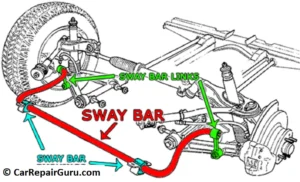
Installing an anti-sway bar can significantly improve vehicle stability and handling performance, but proper installation is crucial to ensure safety and effectiveness. Below is a step-by-step guide to anti-sway bar installation, along with key considerations for a smooth process.
Tools Required:
- Jack and jack stands
- Socket wrench set
- Torque wrench
- Lubricant (for bushings)
- Replacement sway bar bushings and links (if needed)
Step-by-Step Installation Guide
- Secure the Vehicle
- Park on a flat surface and engage the parking brake.
- Use a jack to lift the vehicle and secure it with jack stands for safety.
- Locate and Remove the Old Sway Bar (If Applicable)
- Identify the anti-sway bar under the vehicle, usually connected to the suspension system via sway bar links and bushings.
- Use a socket wrench to remove the mounting bolts.
- Inspect and Replace Bushings and Links
- Check for wear on sway bar bushings and end links.
- Replace damaged components to ensure proper sway bar maintenance.
- Install the New Anti-Sway Bar
- Align the anti-sway bar with the mounting points.
- Secure it using the provided brackets and bushings.
- Tighten and Torque the Bolts
- Use a torque wrench to tighten bolts to the manufacturer’s specifications.
- Test the Installation
- Lower the vehicle and take a slow test drive to ensure improved handling performance and body roll reduction.
When to Seek Professional Installation
If you’re unfamiliar with suspension system components or lack the proper tools, professional sway bar installation is recommended. A mechanic can ensure precise roll stiffness adjustment, avoiding potential handling imbalances. Proper installation ensures long-term vehicle stability and enhanced driving safety.
Conclusion
Upgrading or maintaining your anti-sway bar is a simple yet effective way to enhance vehicle stability, reduce body roll, and improve handling performance. Whether you’re driving a daily commuter, a performance car, or an off-road vehicle, selecting the right sway bar and ensuring proper sway bar maintenance can make a significant difference in your driving experience.
By understanding the types of sway bars, recognizing signs of wear, and following the correct anti-sway bar installation process, you can optimize your vehicle’s suspension system for better control and safety. If you’re unsure about installation, seeking professional assistance ensures the roll stiffness and cornering performance are correctly tuned to match your vehicle’s needs.
A well-maintained anti-sway bar keeps your ride smooth, stable, and responsive—allowing you to navigate turns, sudden maneuvers, and varying road conditions with confidence.
FQA About Anti-Sway Bars
Q1: How do anti-sway bars improve vehicle handling?
Anti-sway bars enhance vehicle stability by reducing body roll, which improves handling, especially during turns and sudden maneuvers.
Q2: Do all vehicles need anti-sway bars?
While not all vehicles have anti-sway bars as standard, most performance vehicles and those used for towing or off-roading benefit from them. They improve suspension control and reduce sway.
Q3: Can I install an anti-sway bar myself?
Installing an anti-sway bar can be done with the proper tools and knowledge, but it’s often recommended to seek professional help for safety and accuracy.
Q4: What’s the difference between a solid and a hollow sway bar?
Solid sway bars are typically stronger but heavier, while hollow sway bars are lighter and still provide good performance, making them ideal for racing and performance vehicles.
Q5: How often should I check my anti-sway bar?
It’s important to inspect the anti-sway bar regularly, especially if you notice any unusual noises or changes in handling. Regular maintenance ensures optimal performance.
